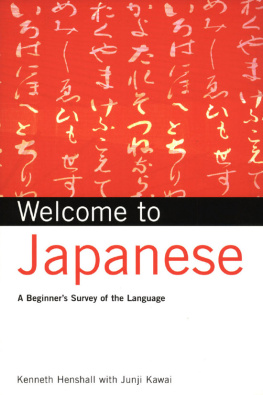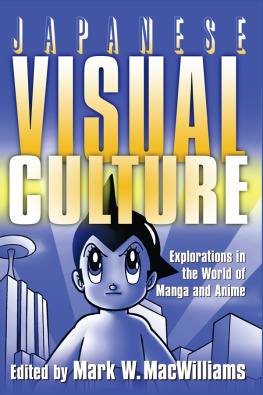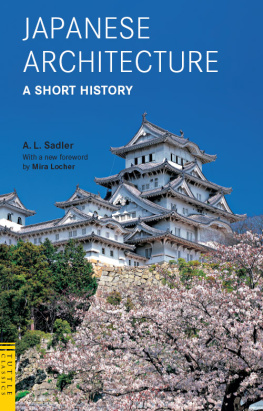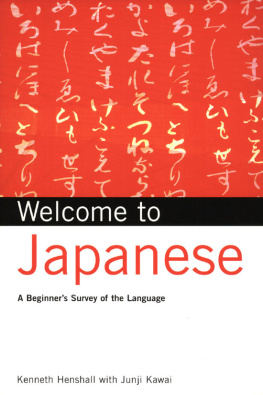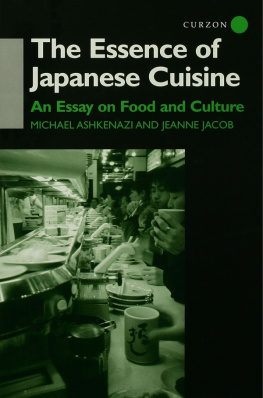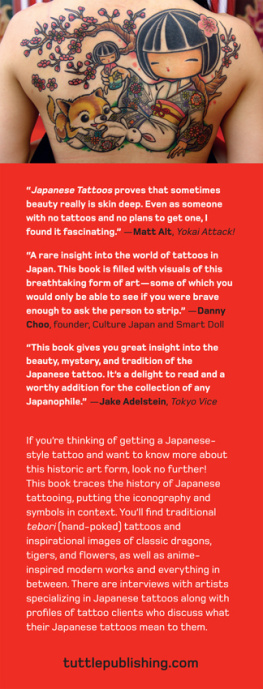A

BOOK
The publisher gratefully acknowledges the generous
contribution to this book provided by the Philip E. Lilienthal
Asian Studies Endowment Fund of the University of California
Press Foundation, which is supported by a major gift from
Sally Lilienthal.
Erotic Grotesque Nonsense
ASIA PACIFIC MODERN
Takashi Fujitani, Series Editor
1. Erotic Grotesque Nonsense: The Mass Culture of Japanese Modern Times, by Miriam Silverberg
2. Visuality and Identity: Sinophone Articulations across the Pacific, by Shumei Shih
Erotic Grotesque Nonsense
The Mass Culture of Japanese Modern Times
MIRIAM SILVERBERG

Thank you to Duke University Press for permission to publish material from Constructing a New Cultural History of Prewar Japan, in Japan in the World, edited by Masao Miyoshi and H. D. Harootunian (1991), and to the University of California Press for permission to publish new versions of The Modern Girl as Militant, in Recreating Japanese Women, 16001945, edited by Gail Bernstein (1991), and The Caf Waitress Serving Modern Japan, in Mirror of Modernity: Invented Traditions of Modern Japan, edited by Stephen Vlastos (1998).
University of California Press
Berkeley and Los Angeles, California
University of California Press, Ltd.
London, England
2006 by The Regents of the University of California
Library of Congress Cataloging-in-Publication Data
Silverberg, Miriam Rom. 1951
Erotic grotesque nonsense : the mass culture of Japanese modern
times / by Miriam Silverberg.
p. cm.(Asia Pacific modern : I) (Philip E. Lilienthal Asian
studies)
Includes bibliographical references and index.
ISBN 13: 978-0-520-22273-1 (cloth : alk. paper)
1. Popular cultureJapanHistory20th century. 2. Japan
Civilization19121926. 3. JapanCivilization19261945.
I. Title.
DS822.4.S63 2007
306.095209041dc22 2006027326
Manufactured in the United States of America
15 14 13 12 11 10 09 08 07 06
10 9 8 7 6 5 4 3 2 1
Printed on Ecobook 50 containing a minimum 50% post-consumer waste, processed chlorine free. The balance contains virgin pulp, including 25% Forest Stewardship Council Certified for no old growth tree cutting, processed either TCF or ECF. The sheet is acid-free and meets the minimum requirements of ANSI/NISO Z39.481992 (R 1997) (Permanence of Paper).
To Ryan (as promised)
For my Mother, June Naomi Rom Silverberg
and in memory of Fujita Shz
Contents
Illustrations
.
32. Kon Wajir, Goods Needed by Women in Honjo-Fukagawa,
with Prices
By Way of a Preface:
Defining Erotic Grotesque Nonsense
Beginning in the earliest years of the 1930s, the Japanese mass media told the imperial subjects who were its audience that this was a time of erotic grotesque nonsense. The words became the shorthand ero guro nansensu in a successful attempt, it would appear, to match what was considered the upbeat tempo of the era. While the intensification of pace in such new public places as cafs and the boulevards of the so-called Modern Girls may have been one breathless response to the calls for speedup by Japanese industry, it was at the same time expressive of more liberatory energies. But just as the call to arms took hold during the decade preceding Pearl Harbor, the three-part phrase was quickly and has forever since been taken for granted. The phrasing ero guro nansensu has been the means to make sense of a culture represented as decadenta culture ostensibly eager to celebrate the degradation wrought by sensual pleasures while ignoring the pleas of party politics and the unharnessed militancy in the streets.
I agree that yes, the early 1930sas well as the years immediately preceding the invasion of Manchuria in 1931, up through the years following the attack on Pearl Harborwere a time of erotic, grotesque nonsense, and not only because the print and visual media in Japan chose to repeat those terms. This was true, not because these were erotic (meaning pornographic, without here debating the nuances of that term), grotesque (viewed as malformed or unnaturally unseemly), or even nonsensically silly (and thus meaningless) years. I have my own definitions for the erotic, grotesque, and the nonsensical following from my reading of the language of the Japanese mass media of what I call Japans Modern Years. In the segments that follow, erotic connotes an energized, colorful vitality. Grotesquerie is culture resulting from such deprivation as that endured by the homeless and by beggars. Finally, nonsense makes a great deal of sense, as the filmmaker Itami Mansaku pointed out for us. The boisterousness of popular vaudeville can, and in modern Japan did, challenge relationships of domination of one class, culture, or nation-state by an other.
In sum, in Japan from the 1920s into the 1940s, ero guro nansensu was expressive of the vitality of the culture of the time. This was a culture which in no small part included fantasies, language, and gestures sold and created by consumer subjects, including those rendered down and out by the vicissitudes of capitalism. It is my hope that my montage will show that so-called nonsense was no aside, but rather was in fact expressive of a politics that was quite cognizant of the power play involved in the attempts of cultures to colonize.
What follows is one version of a history that continues to be told at the same time it is lost to us, while still, and even more so, the noise of the drum-roll surrounds all of us.
Los Angeles
September 11, 2005
Acknowledgments
I would like to acknowledge all who have given me support for far too many years. I am grateful to the generations of graduate students for their enthusiasm and their delicacy in asking after the book. I especially wish to thank Michael Baskett, Elyssa Faison, Hiromi Mizuno, Michiko Takeuchi, and Greg Vanderbilt. Thank you also to the other students: Todd Henry, Naomi Ginoza, Serk-bae Suh, Kristine Dennehy, David Eason, Haeng-ja Chung, Ann-Marie Davis, Shinn Nakamura, Yeunjee Song, Helen Lee, Marvin Sterling, Hajime Imamasa, Rumi Yasutake, Eiichiro Azuma, Sung Choi, and Yuki Terazawa.
Thanks also to my relatives who waited in bewilderment: Joe, Gail, and Katie Silverberg, Sybil Hexter, Fern and Louis Guthman, Sindy Levine, and Helen Hopps. To my close readers: Sande Cohen, Fred Notehelfer, Martin Krieger, Tetsuo Najita, Jamie Quinn, Sue-Ellen Case, Seiji Lippit, Esha De, Susan Foster, Joyce Appleby, Ken Pomerantz, Kano Masanao, Michael Bourdaghs, Harryette Mullen, Walter Lew, Tsurumi Shunsuke, Jim Fujii, Mariko Tamanoi, Norma Field, Valerie Matsumoto, and Tak Fujitani. To my kin, friends, and colleagues: Fujita Haruko, Gail Bernstein, Susan Griswold, Sondra Hale, Michelle Tanebaum, Mizusawa Tsutomu, Anne Allison, Saito Yoko, Suranjan De, Fumiko Nishino-Friedewald, Muriel McClendon, Jan Reiff, the Monday Night Group, the Birthday Girls, the Got to Stop Meeting Group, Madonna Hettinger, Maria Lymberis, Hosokawa Shuhei, Hayden White, Suh Kyung-sik, Janet Gershon, Tani Barlow, Margaret Brose, Nora Barziv, Masao Miyoshi, Dorinne Kondo, Alice Wexler, Ryusawa Takeshi, my staff at the UCLA Center for the Study of Women, Fujime Yuki, Sharon Traweek, Jonathan Hall, Ken Wissoker, Toshi Saneyoshi, Herman Ooms, my colleagues at the Stanford Humanities Center, MJ Manocchio, Yoshimi Shunya, Henry Smith, Saul Friedlander, Harry Harootunian, Karen Brodkin, Belli Fiori, Kano Masanao, the Colonialism and Modernity Group at the University of California Humanities Research Institute, Ann Notehelfer, Nishikawa Yuko, Song Youn-ok, Debora Silverman, Nora Barziv, Mariko Bird, Anne Walthall, Rick and Helen Werner, Aaron Seligman, Wayne, Scapino, and Fiorello Fisher, Nakagawa Shigemi, Rin Shukumi, Stephanie Quinn, John Dower, Nimura Kazuo, Norma Field, Mushiga Munehiro, Helen Sanematsu, Amy Richlin, Fujita Yuichi, Jeffrey Prager, Don and Toshiko McCallum, Noah Guthman, Lissa Wadewitz, Lisa Yoneyama, Howard Feinstein, Hans and Claire Rogger, Jose Peregrino, Stacy Yamaoka, Buster Silverberg, Janet Gershon, Lillian Wang, Okamoto Naoko, Margaret Freiwald, the staff at International House, Mary Yeager, Yasumidokoro, Gene Tobin, Chungmoo Choi, and so many others. I am grateful for the memories of Agha Shahid Ali, Ishido Kiyotomo, and Sata Ineko.
Next page



